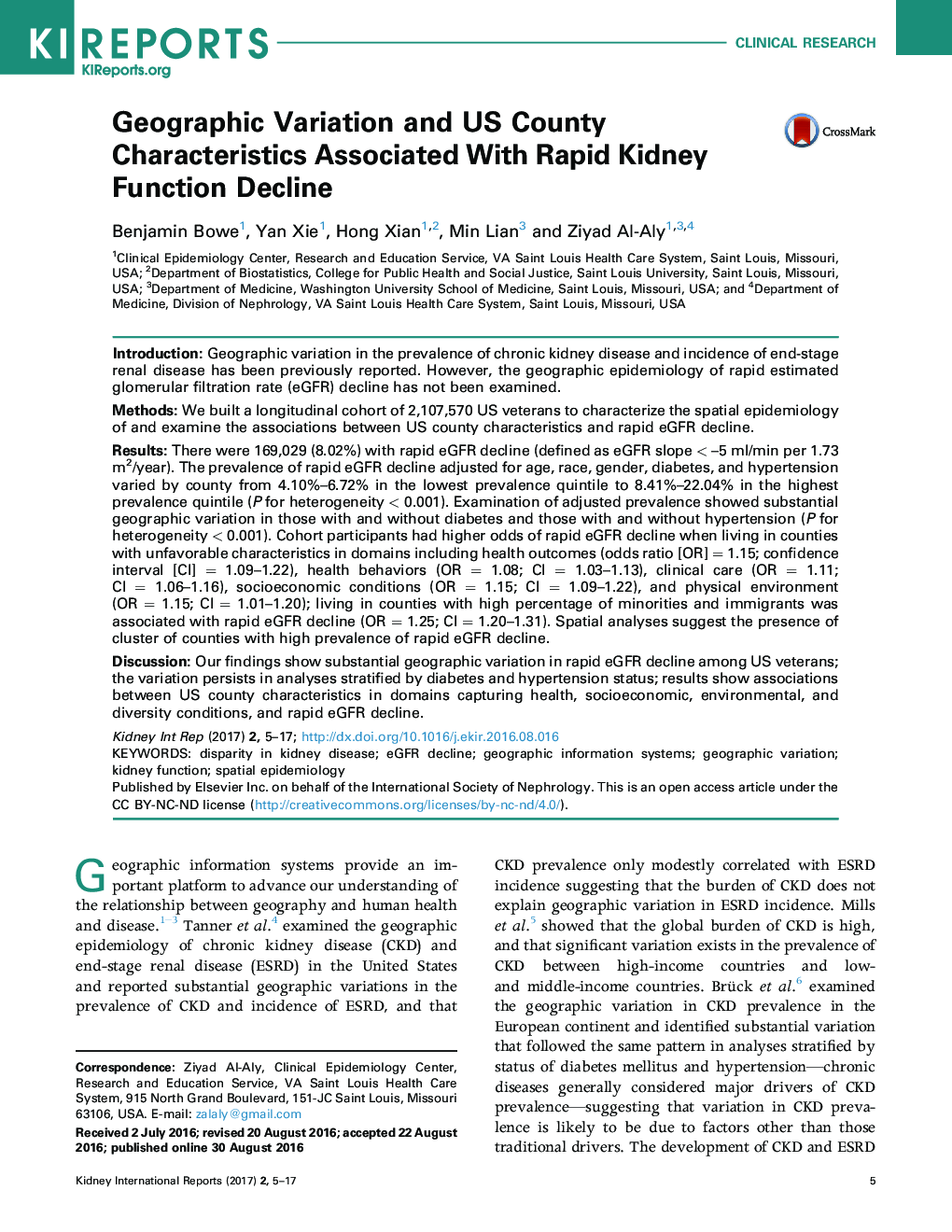| کد مقاله | کد نشریه | سال انتشار | مقاله انگلیسی | نسخه تمام متن |
|---|---|---|---|---|
| 5688398 | 1409901 | 2017 | 13 صفحه PDF | دانلود رایگان |
IntroductionGeographic variation in the prevalence of chronic kidney disease and incidence of end-stage renal disease has been previously reported. However, the geographic epidemiology of rapid estimated glomerular filtration rate (eGFR) decline has not been examined.MethodsWe built a longitudinal cohort of 2,107,570 US veterans to characterize the spatial epidemiology of and examine the associations between US county characteristics and rapid eGFR decline.ResultsThere were 169,029 (8.02%) with rapid eGFR decline (defined as eGFR slope < -5 ml/min per 1.73 m2/year). The prevalence of rapid eGFR decline adjusted for age, race, gender, diabetes, and hypertension varied by county from 4.10%-6.72% in the lowest prevalence quintile to 8.41%-22.04% in the highest prevalence quintile (P for heterogeneity < 0.001). Examination of adjusted prevalence showed substantial geographic variation in those with and without diabetes and those with and without hypertension (P for heterogeneity < 0.001). Cohort participants had higher odds of rapid eGFR decline when living in counties with unfavorable characteristics in domains including health outcomes (odds ratio [OR] = 1.15; confidence interval [CI] = 1.09-1.22), health behaviors (OR = 1.08; CI = 1.03-1.13), clinical care (OR = 1.11; CI = 1.06-1.16), socioeconomic conditions (OR = 1.15; CI = 1.09-1.22), and physical environment (OR = 1.15; CI = 1.01-1.20); living in counties with high percentage of minorities and immigrants was associated with rapid eGFR decline (OR = 1.25; CI = 1.20-1.31). Spatial analyses suggest the presence of cluster of counties with high prevalence of rapid eGFR decline.DiscussionOur findings show substantial geographic variation in rapid eGFR decline among US veterans; the variation persists in analyses stratified by diabetes and hypertension status; results show associations between US county characteristics in domains capturing health, socioeconomic, environmental, and diversity conditions, and rapid eGFR decline.
Journal: Kidney International Reports - Volume 2, Issue 1, January 2017, Pages 5-17
